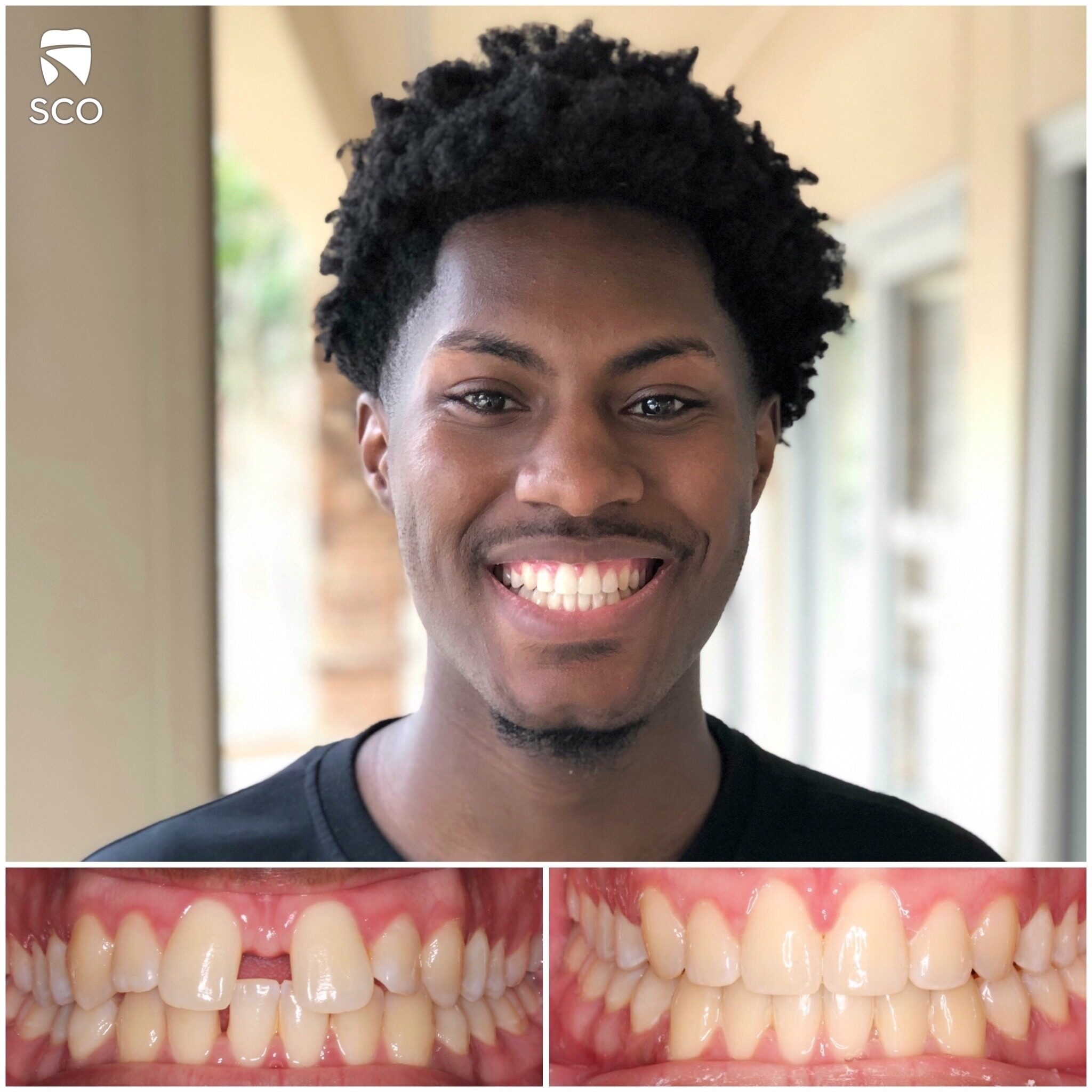Memphis Braces
Traditional Treatment
You’ll see traditional metal braces rank at the top of Saddle Creek Orthodontics’ treatment list — and for good reason!
For 100 years, orthodontists like Dr. Kyle and Dr. John have used braces to straighten smiles the same way we do at our two offices in Germantown and Collierville.
All About Traditional Metal Braces
Traditional metal braces are robust, durable, and affordable, making them the top treatment for orthodontic patients at SCO year after year. At Saddle Creek Orthodontics, we’re proud to provide the latest braces technology to kids, teens, and adults everywhere around Germantown, Collierville and Memphis.
After standing the test of time for about 100 years in one form or another, doctors and patients alike trust braces as a reliable, effective, and economical treatment choice.
Combining high-grade stainless steel, nickel, and other metals, you’ll see bands wrapping around the back molars and smaller metal brackets cemented to the fronts of the other teeth.
The thin, springy metal wire called an archwire runs through the brackets and may be fixed to the brackets with elastics, metal ties, or another type of clasp. These parts all cooperate to gently guide your teeth over time into their new positions.
Although you may know past versions as bulky, awkward, or even painful, today's metal braces look smaller and feel lighter and more comfortable to wear than ever before. (Did you know that you can even personalize your braces with your elastic colors?)
Strong
Doctors around the world use traditional metal braces more than any type of fixed or removable orthodontic appliance because they’re strong and efficient. Dr. Kyle and Dr. John put braces to work, efficiently correcting mild issues to complex problems.
Braces are great at fixing all kinds of tooth issues, including complex problems. Dr. Kyle and Dr. John can actually use braces to close gaps and align your teeth faster than other treatments. Who wouldn’t want a shorter overall treatment time.
Cost-Effective
Metal braces are cost-effective because they don’t require some of the more complex technology or expensive equipment that newer treatments do.
How Braces Work
Scan
Before applying your brackets or putting on your braces, we need to see your problem areas. So first, our team will shoot some pictures and collect X-rays of your mouth.
Sometimes, we’ll use our iTero Element scanner to scan each tooth and the layout of your gums and mouth. This 10-15 minute process gives Dr. Kyle and Dr. John an extremely accurate 3D view of your mouth.
Plan
Then, Dr. Kyle or Dr. John will use your X-ray and scan data to formulate your customized treatment plan. This plan will include how each tooth needs to be moved to get it in the best possible position to bite correctly and look attractive.
Based on this plan, Dr. Kyle or Dr. John determine how to place the braces brackets. For example, if your tooth needs to turn, we’ll place that bracket differently to a bracket for tilting your teeth.
Remodel Your Teeth
Once we attach your brackets, we’ll insert the wire. Most orthodontists like Dr. Kyle and Dr. John create precise movements using this bend in the wire. Bends in the wire will provide different types of pressure on different teeth.
For example, we might need to help a twisted tooth turn and face the right direction or align a tooth that’s too far forward with another tooth that’s too far back. This process of tooth movement is called remodeling, and it involves minor changes in the bone surrounding the roots of your teeth.

Remodeling Science
Want to know more about the science behind remodeling?
When we put pressure on a tooth, cells called osteoblasts and osteoclasts form around the tooth’s root. The force of the wire and the osteoblasts and osteoclasts together create a negative pressure on one side of the tooth.
At this site, bone is removed. On the other side of the tooth, bone is reformed. Then, while we put pressure on your tooth, it slowly moves to its new position. This is how we remodel the bone of your tooth and jaw!
We can only make this process happen if we put constant pressure on your tooth. The tooth can move as bone is absorbed on one side and then deposited on the other.
When we take off your braces and stop the pressure, your tooth settles into its new position. However, most teeth will start to drift back to their old positions over time.
That’s why we’ll give you retainers. Wearing a retainer as directed helps keep your new teeth in their new, improved positions and prevents this natural drifting.
Parts of Braces
Brackets
Dr. Kyle and Dr. John use brackets typically made from a mix of stainless steel, nickel, and other metals, making them strong and long-lasting.
Brackets feature little hooks or doors, and we thread the wire over these. Then, we secure the bracket by closing the door or placing an elastic over the top of the wire.
Glue
Dr. Kyle and Dr. John attach your braces brackets to your teeth with a type of composite bonding material that we call “glue”. If you need more serious treatment, we’ll use metal bands with the glue to to stabilize the braces and give them more leverage.
Some orthodontists might hold a tooth in place by attaching the bracket to a metal band and then crimping it around the tooth. These days, it’s more common to glue the bracket right to your tooth.
Wire
This thin piece of metal runs from one bracket to another. Dr. Kyle and Dr. John shape and curve the wire to move your teeth in the direction they determined in your custom treatment plan.
They’ll crimp the wire to push or pull any especially stubborn teeth.
For some people, we’ll attach all the bottom or upper teeth together with the wire, but we may strategically cut the wire if we only need to connect only a few teeth.
Elastics
At Saddle Creek Orthodontics, we use rubber bands for many different situations, especially when we want to put extra pressure on the teeth or jaws. If you have a bite issue, Dr. Kyle and Dr. John correct it using elastics.
We normally string elastics between the hooks on the upper and lower brackets. This pressure can correct an overbite by pulling the upper jaw backward. In the case of an underbite, elastics will pull the lower jaw back.
Orthodontic Bands
We cement these stainless steel rings to your teeth using dental bonding agents. Dr. Kyle and Dr. John don’t always use orthodontic bands for everyone, but they provide an anchor for your braces and orthodontic appliances.
Spacers
If you need space between your teeth, we’ll create it using these tiny elastic “donuts” or rings to create space between your teeth if you need it. Sometimes you might hear them called "separators".
Elastic Ties/O-Rings/Ligatures/Colors
Dr. Kyle and Dr. John use these tiny rubber rings or bands to attach the archwire to the brackets. Elastics flex easier than spacers, and you can get them in dozens of colors.

Metal Braces FAQs

What’s the Next Step?
If you’re ready to improve your oral health and smile with confidence, schedule your free consultation at our office in Germantown or Collierville and talk to Dr. Kyle Fagala or Dr. John Boling.